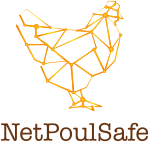Forum Replies Created
-
AuthorPosts
-
Luc Ledoux
ParticipantRegulation on disinfection of hatching eggs (which should be called “disinfection of egg SHELLS in reality; once microbes got inside the eggs through its thousands of pores its too late) is regulated differently country by country.
Formaldehyde is carcenogenic and doesn’t kill spores of Aspergillus fumigatis.
In the past, we’ve done research on 9.7 million eggs and chicks with Virocid, but, again, not every country allows hatching egg disinfection.
Before setting is the best time, but eggs shold be allowed to dry before they enter the setter.
Also on the farm, a first disinfection is advisable (when allowed). Thus no contaminated eggs enter the egg reception room.Luc Ledoux
ParticipantFirst week mortality is an indicator of day old chick quality at the hatchery. Hatchery hygiene is one of the parameters to maximize chick quality (other than setting the eggs at the correct program in terms of temperature, humidity, ventilation and turning, which is more accurate with sealed single stage incubators than with multistage machines, that cannot be cleaned and disinfected every 18 days).
But chick quality equally refers to hatching egg management ( egg storage, egg hygiene (no dirty eggs in the setter) , avoiding hair line cracks during egg transport, etc).
You can get a good chick out of a good egg; you can never get a good chick out of a bad egg!Luc Ledoux
ParticipantAir quality is VERY important in the hatchery and air FLOW even more. The “dirty zone” (where chicks are) should have a negative pressure compared to the “clean zone” (where eggs are) to prevent microbes (and esp. spores of Aspergillus) to cause cross-contamination. Hence regular airplating is paramount. And often, fogging (aeral disinfection) can be of big help to reduce air contamination.
Luc Ledoux
ParticipantSurface sampling (swabbing) should be done minimum twice per year. And more often in case of higher risks, spikes in chick mortality and certain contaminations (lile Salmonella). In some countries this is either regulated by law or through a local quality standard like “Belplume” in Belgium, IKB in Holland, etc.
Luc Ledoux
ParticipantFor tracing Salmonella swabbing can be done.
Specific C&D Protocol :
– hatchers and plenums :
* scoop up fluff from floor (and cooling coils)
* rinse or (better) foam directly a well penentrating and adhering alkaline detergent on all surfaces, rinse after 20 min, let dry, disinfect (ideally by foam). Pay special attention to the floor and hidden corners. Pay special attention to parts the eye doesn’t meet. In case of hard water (scale deposit) we advize to use an acid foam detergent 1 week per month. Fog the hatcher room with disinfectant at night.
– chick processing and chick storage room equipment: foam directly a well penentrating and adhering alkaline detergent on all surfaces, rinse after 20 min, let dry, disinfect (ideally by foam). Fog the room with disinfectant at night.
– tray wash room: clean your tunnel washer ! Rotate alkaline and acid detergent if hard water and scale build up. Fog the room.
– setters: similar protocol as hatchers (except fluff scooping)
– make sure the eggs have been disinfected both at the farm and at the hatchery.–
Luc Ledoux
ParticipantAir quality is VERY important in the hatchery and air FLOW even more. The “dirty zone” (where chicks are) should have a negative pressure compared to the “clean zone” (where eggs are) to prevent microbes (and esp. spores of Aspergillus) to cause cross-contamination. Hence regular airplating is paramount. And often, fogging (aeral disinfection) can be of big help to reduce air contamination.
Luc Ledoux
ParticipantFluff should be evacuated. Procedure:
– manually scooping up from floor and eventually cooling coils
– rising out or (better) foaming directly a well adhering and well penetrating foaming detergent on the fluff in the hatcher and plenum. Rinse nd let dry before disinfectingLuc Ledoux
ParticipantFluff is one of the main CCPs in hatcheries.
SAlmonella for exmple can live in fluff for more than 5 years. By all means it should be avoided that fluuf ( present in the “dirty zone”), can move to the “clean zone”. Therefore correct air pressure is needed: positive pressure in the “clean zon”” -
AuthorPosts
